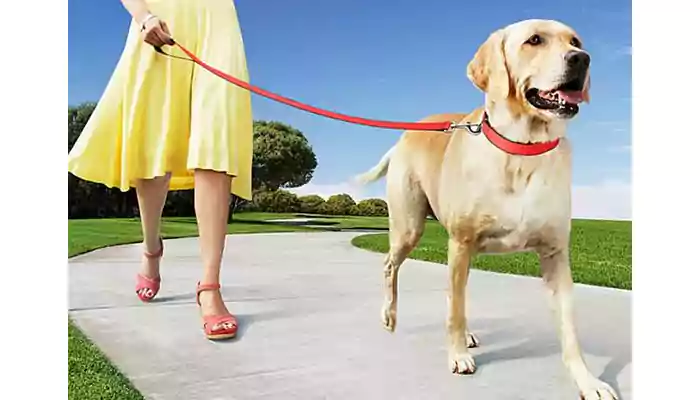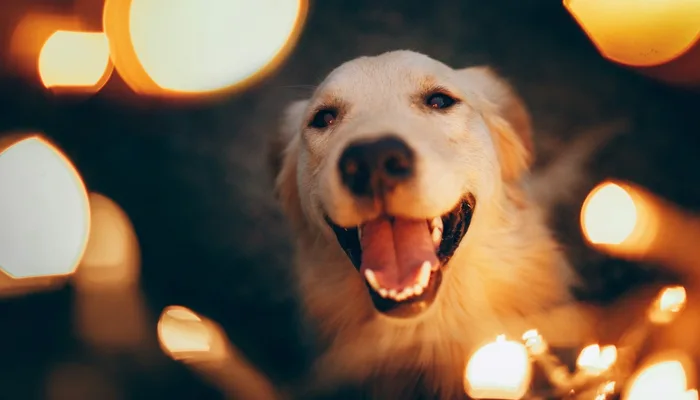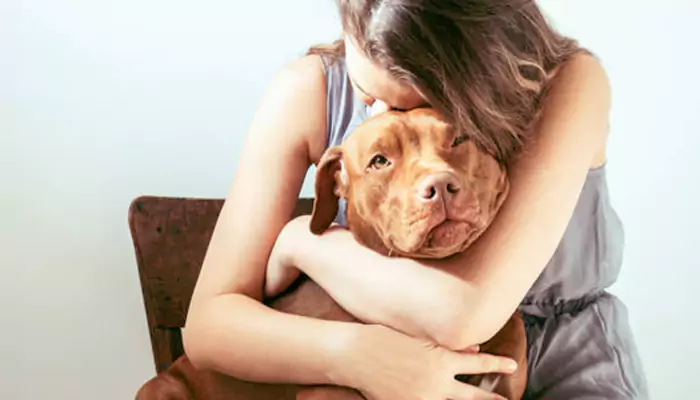Combatting Canine and Feline Flab: National Pet Obesity Awareness Day Advocates Treatwise Strategies

Our pets hold a cherished and integral place within our families, and imagining life without them is inconceivable. We have a deep affection for our furry companions, and one beautiful way to express our love and devotion is by occasionally treating them to special indulgences. These gestures of kindness strengthen the bond we share with our beloved pets, enhancing our shared joy and companionship.
However, concerns about overweight pets continue to grow among veterinarians across the UK. An alarming statistic reveals that approximately 40 percent of dogs and cats are grappling with excess weight or obesity, a condition that is essentially a form of malnutrition primarily stemming from excessive calorie intake.
Several factors contribute to this issue, including a sedentary lifestyle, an imbalanced diet, and a lack of exercise. Disturbingly, a 2018 PAW report highlighted that a minimum of 1.4 million dogs receive less than one daily walk.
Our human experiences parallel the struggles our cherished pets face. Just as we can quickly gain weight with a change in activity levels, so can our furry companions. We often make resolutions in the new year to eat healthier and exercise more, but these intentions can wane as the year progresses.
Much like us, our pets require regular exercise and a balanced diet throughout their lives. It is our responsibility as pet owners to ensure their well-being. This approach will not only help them maintain a healthy, active life but also prevent excessive weight gain.
What are the Signs and Symptoms of Obesity in Dogs?
Detecting signs of obesity in dogs can be challenging, as it varies by breed. Some breeds naturally appear fluffier, but every dog has an ideal weight relative to their size, height, and age. Veterinarians use body condition scores to assess this. To gauge if your dog might be obese, perform a simple test at home. With your dog on all fours, follow these steps:- When assessing your dog's weight, it's essential to engage your sense of touch. Gently run your hand along their side, feeling for the rib cage beneath the fur. The goal is to sense the ribs without exerting excessive pressure.
- Notably, overweight dogs tend to exhibit certain characteristics. Their extra weight often results in a thicker layer of skin and fur, making it challenging to visually or tactilely discern their ribs, spine, or waistline.
- When viewed from the side, an overweight dog's abdomen may protrude noticeably.
- Additionally, weight gain can lead to the accumulation of excess skin around the pet's face.
What are the Signs and Symptoms of Obesity in Cats?
Our beloved furry companions can also put on weight if we indulge them with too many treats. When a cat's weight exceeds 20 percent of its ideal, it is deemed obese, while being 10 to 19 percent heavier qualifies as overweight. To identify weight gain in your cat, follow these steps with your feline standing on all fours:- Gently glide your fingers along your cat's side, paying attention to their ribcage's presence and texture. In an ideal state, you should be able to feel their ribs beneath the fur, without them being overly visible.
- A cat at a healthy weight will exhibit a well-defined abdomen, with minimal body fat encircling their waistline. This creates a trim and sleek appearance, indicating proper fitness.
- However, if your feline companion carries excess weight, you may notice their tummy protruding or hanging down.
- An overweight cat typically displays a more substantial appearance around their abdomen, lacking the defined waistline typically observed between the ribcage and hips.
Pets carrying excess weight may exhibit altered behavior compared to those at a healthy weight. Overweight cats or dogs might display reluctance towards outdoor activities, such as walks and climbing stairs. Encouragement from caregivers becomes essential to motivate them to become more active and shed those extra pounds.
What are the Adverse Effects of Pet Obesity?
Pet obesity profoundly impacts the well-being of our beloved animals by impairing their overall bodily functions. Much like humans, overweight pets can swiftly develop ailments such as diabetes, skin conditions, heart disease, and arthritis, primarily stemming from the added strain exerted on their joints due to excess weight. This underscores the importance of managing our pets' weight to ensure their enduring health and quality of life.Breeds Predisposed to Weight Gain in Dogs
Labradors
Labradors, despite their high activity levels, are susceptible to weight gain due to their hearty appetites and fast eating habits, which can disrupt their hunger cues. Furthermore, Labradors possess an additional layer of fat beneath their skin, aiding insulation in cold water but also increasing their overall fat content compared to other canine breeds.Daschunds
Dachshunds possess short, petite legs, which can pose challenges for extended walks. Notably, if a Dachshund carries excess weight, a larger body frame can adversely impact their spine, exerting additional pressure on their skeletal structure.Basset Hounds
Basset Hounds possess a robust and compact physique, characterized by their short stature and petite legs. Similar to Dachshunds, even a slight weight gain can impose additional strain on a Basset Hound's skeletal framework, necessitating careful attention to their weight management and overall health.Pugs
Pugs possess a short facial structure, which can lead to breathing difficulties and reduce their capacity for vigorous physical activities. Consequently, pugs tend to be less active than necessary. Traditionally bred as companions, they tend to be prone to weight gain. This breed's unique features often influence their exercise tolerance and activity levels.Rottweilers
Rottweilers, by nature, tend to be rather sedentary dogs. Initially bred for guarding purposes, their robust appearance and physique might give the impression of a slower pace. However, Rottweilers should possess a good amount of muscle and genuinely enjoy staying active.Aging dogs tend to put on weight due to decreased mobility, while older cats often lose weight due to diminished appetite. To ensure your pet's health, it's crucial to adjust their diet according to their activity level. As a responsible pet owner, it falls on you to help them maintain their ideal weight by monitoring their calorie intake.
Breeds Predisposed to Weight Gain in Cats
Certain cat breeds in the UK tend to exhibit characteristics in behavior, size, and shape that make them more susceptible to weight gain, factors cherished by many pet enthusiasts.British Shorthair
The British Shorthair, a beloved breed in the UK, tends to be susceptible to weight gain. Their physique is characterized by a robust, muscular frame, emphasizing the importance of not overfeeding them. This helps ensure that their muscle development primarily consists of protein rather than fat, promoting their overall health and well-being.Russian Blue
This particular cat breed exhibits a robust appetite, and if they fail to engage in an active lifestyle, they are prone to weight gain due to overindulgence in eating. It is essential to be mindful of their activity levels to prevent excessive weight gain.Main Coon
Maine Coons are naturally large cats, and despite their fluffy appearance, they can be susceptible to weight gain. It's crucial to regularly monitor their condition since their fur can mask any extra pounds they might be carrying. Maintaining their ideal weight is essential for their overall well-being and health.Persians
The Persian cat, known for its preference for indoor living, tends to have reduced activity levels. These felines have a unique way of picking up food using the underside of their tongue, necessitating a tailored diet to facilitate proper chewing.Ragdolls
Ragdolls, known for their affectionate and sociable nature, tend to be of larger stature, necessitating a well-balanced diet and ample exercise to maintain their optimal weight. These feline companions require special care to ensure their health and happiness.Preventing Pet Obesity

If you suspect that your dog or cat might be carrying excess weight, here are the top nine strategies for managing their weight effectively and promoting a healthier physique.
Deliberate on Their Dietary Choices
Is their diet primarily rich in protein and low in fat, avoiding an excessive intake of carbohydrates?How often do you feed them?
A pet's meal size should be tailored to their age and size to avoid overfeeding. Incorrect portion sizes, whether too large or too small, can lead to weight-related health issues such as excessive weight gain or unhealthy weight loss.What is their Meal Plan?
Establish a regular feeding schedule for your pet, ensuring they anticipate meal times.Practice Smart Treat Choices
How many snacks do they receive daily? Your pet's diet should primarily consist of a mere 10% designated for treats, encompassing scraps or any additional food apart from their daily meal.Provide Pet-Friendly Food
Ensure you offer pet-friendly treats to your dogs or cats and adjust their daily calorie intake if they consume more treats than usual. This practice promotes their well-being and maintains a healthy diet.Quality Should Trump Quantity
The accumulation of treats can swiftly contribute to one of the primary causes of pet obesity, alongside leading a sedentary lifestyle. It's important to be mindful of these factors to ensure the well-being of your beloved companion.
Slow/Puzzle Feeder Pet Bowl
Pets with a strong food affinity may devour their meals hastily, missing out on savoring the taste and possibly leading to gagging, vomiting, or choking. This tendency is particularly observed in dogs, who are at risk of overeating swiftly, resulting in bloat or gastric dilatation, even leading to collapses. If you observe excessive panting, drooling, or vomiting in your dog, it's crucial to promptly contact your veterinarian for assistance.Promote Daily Physical Activity
Ensure your pet receives regular exercise, whether through walks, runs, swims, or indoor play for cats, using toys and climbing structures to encourage movement. Providing these activities is crucial for your pet's well-being and helps them stay active and healthy.Hydrotherapy
Utilizing alternative therapies such as hydrotherapy offers a highly effective means of facilitating your pet's exercise regimen without imposing undue strain on their physique, as the buoyancy of water provides substantial skeletal support.Implementing the discussed changes gradually will facilitate your pet's healthy weight loss journey, ultimately leading to an enhanced lifestyle. These transformations won't occur overnight, but with dedicated pet owners, our furry companions will soon enjoy the associated health advantages. To ease your pets into these adjustments, consider introducing them slowly. This approach is particularly effective when transitioning to a new diet, such as a different type of dog or cat food. Begin by mixing the new food with the old and gradually reduce their intake of the original brand.












